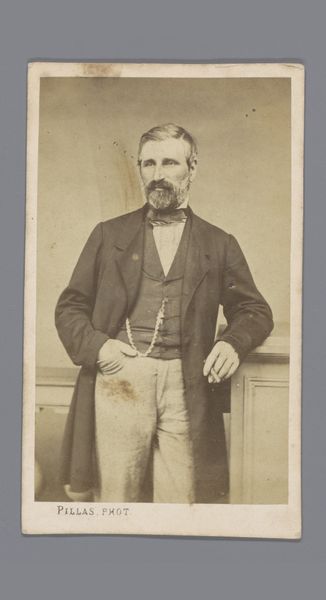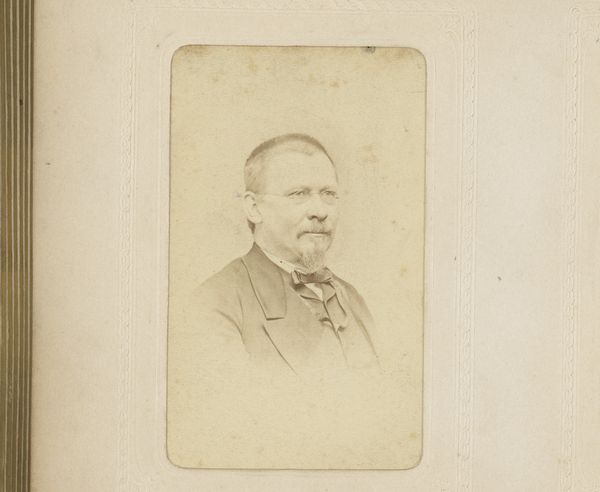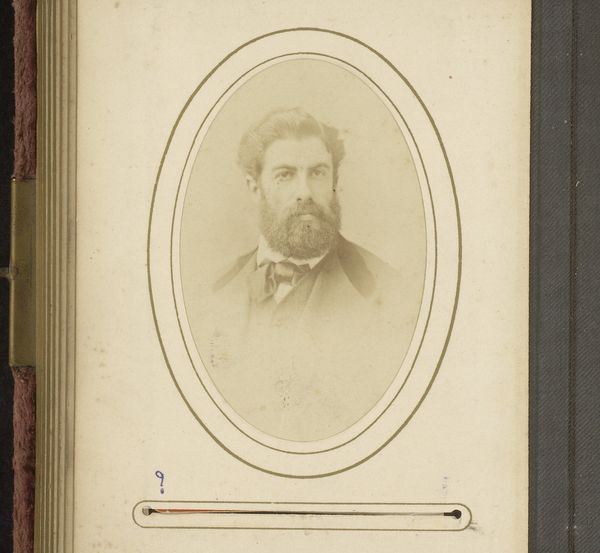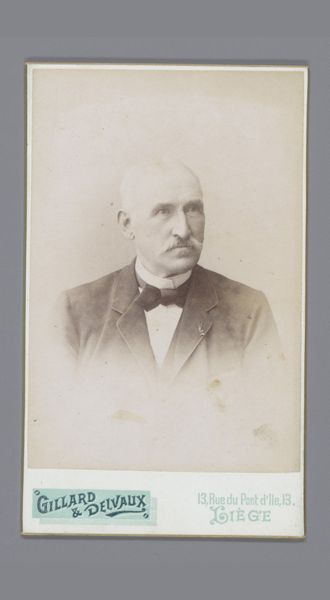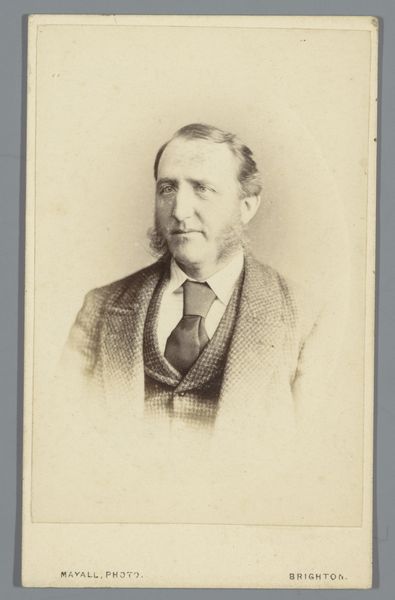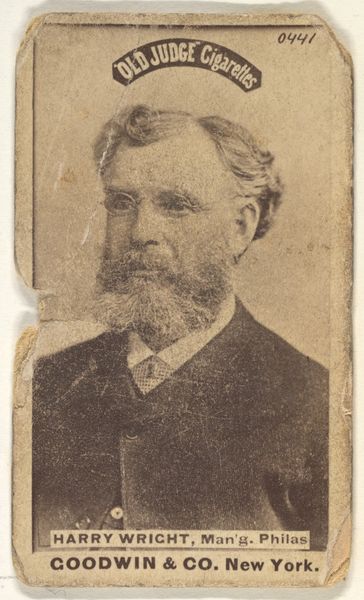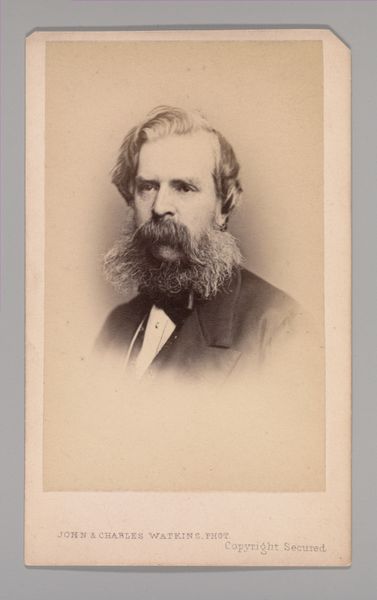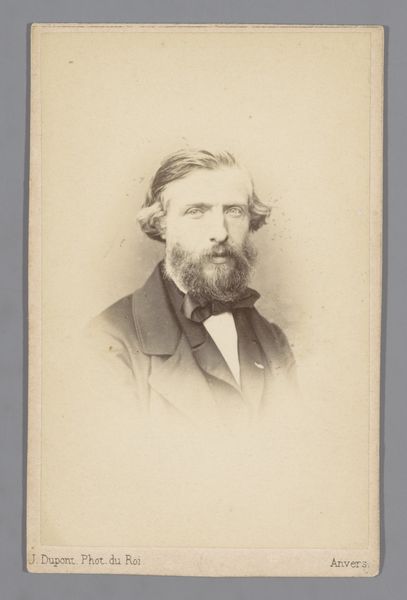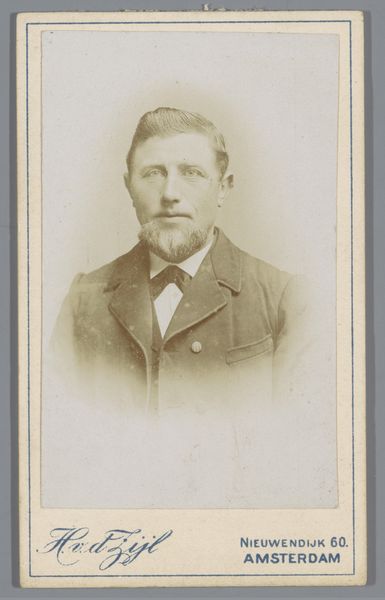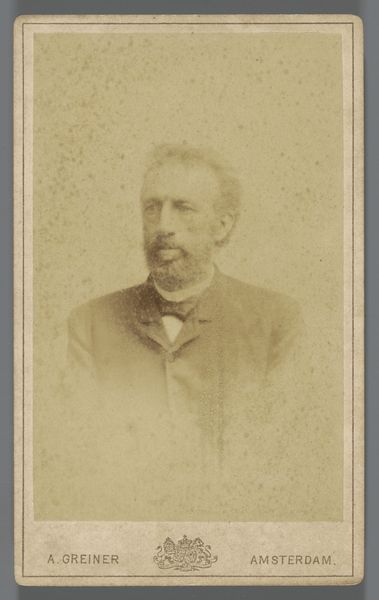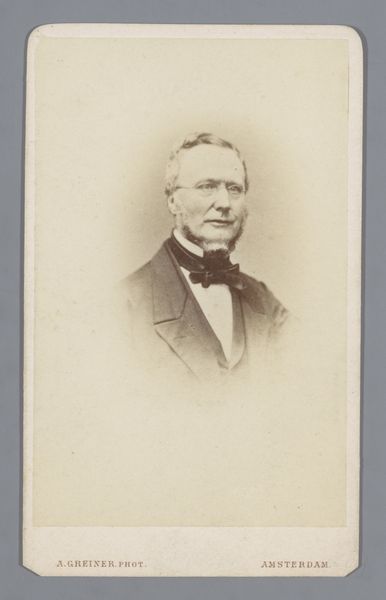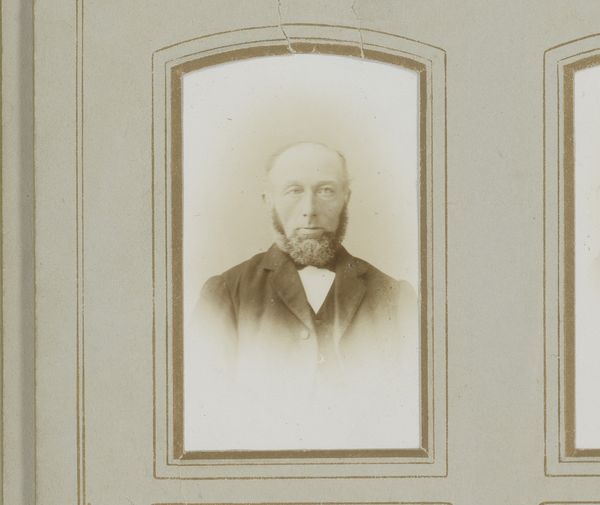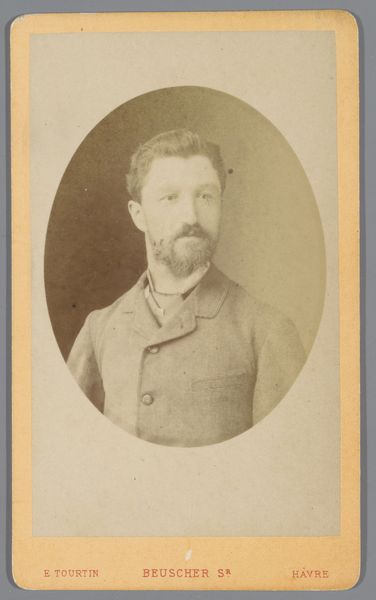
photography, gelatin-silver-print
#
portrait
#
aged paper
#
toned paper
#
photography
#
gelatin-silver-print
#
realism
Dimensions: height 105 mm, width 64 mm
Copyright: Rijks Museum: Open Domain
Editor: This is an albumen print titled "Portret van een onbekende oude man" by P. Thorn, dating from about 1900-1914. It’s striking how the aged paper adds a layer of history. What’s your take on this photographic portrait? Curator: For me, it's intriguing to consider the materiality of this gelatin silver print. We have to consider the economic context. Early 20th-century photography was democratizing portraiture. Instead of only the wealthy commissioning painted portraits, working and middle-class people could participate in image production. Can we know who this is through the material? Editor: That’s a good question, perhaps looking at his clothing might provide some clues about social standing? Curator: Precisely. His simple attire suggests a certain level of social modesty, perhaps even aspiration to appear respectable. Moreover, how was this print used? As a keepsake? An official record? Or some other form of currency or communication in its own right. Consider that photographic chemicals themselves were products with industrial and social implications that we need to also account for in art production. Editor: So, understanding its context isn't just about the subject, but also about how it was made and what it was used for? Curator: Absolutely. It recontextualizes portraiture through accessible means of production, transforming identity into a manufactured commodity. It makes you wonder how the mass production of portraiture has impacted society’s view of class distinctions? Editor: This makes me rethink how to value such photographs in museums, especially portraits of unknown people, I will never look at a photo the same way! Curator: Yes, focusing on process and circulation allows us to appreciate how even simple photographic objects reflect broader economic and social landscapes of labor and making.
Comments
No comments
Be the first to comment and join the conversation on the ultimate creative platform.
